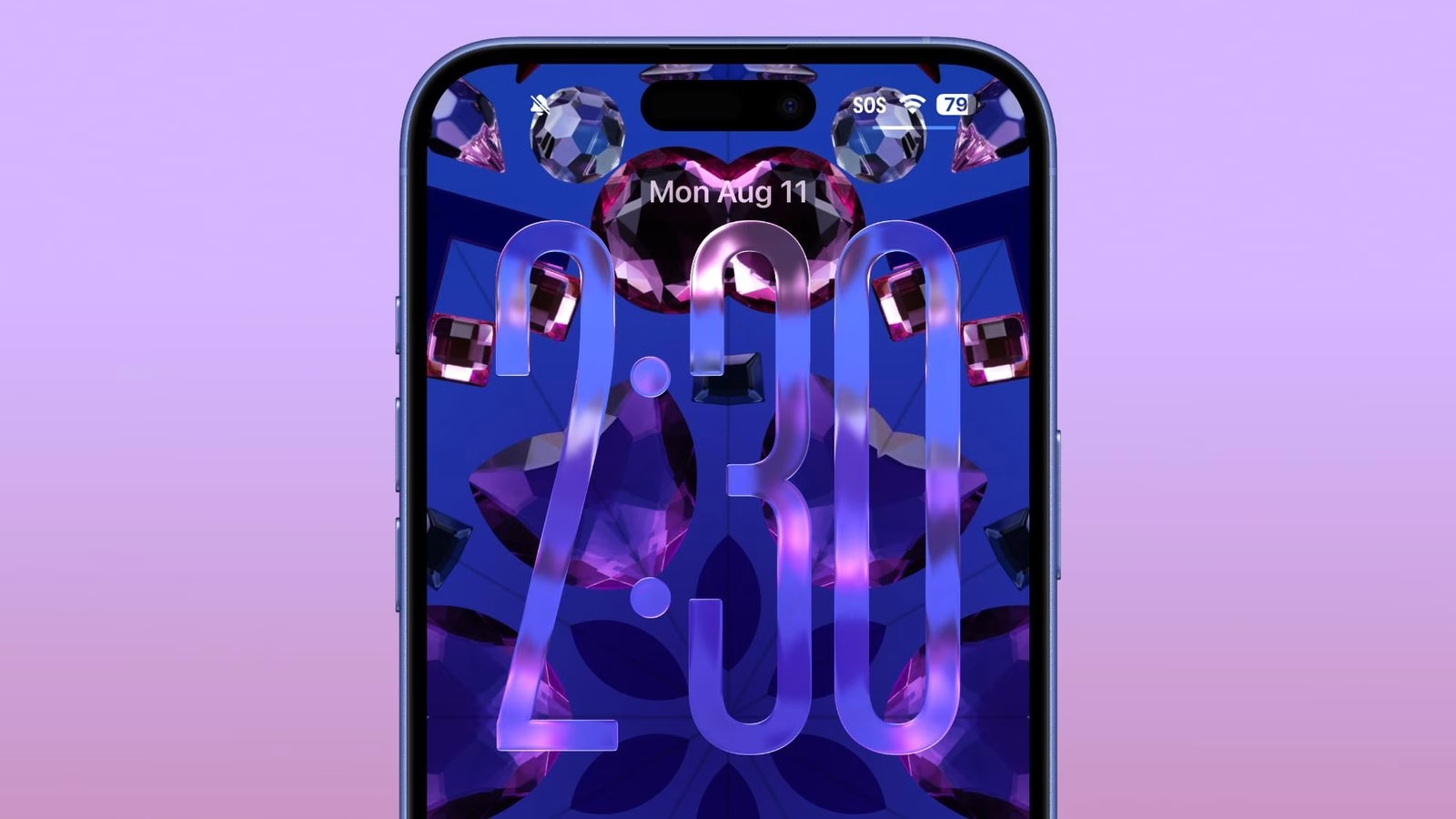Apple Refines Liquid Glass in iOS 26 Beta 6: A Deeper Dive into Design Evolution
Apple has once again tweaked its much-discussed "Liquid Glass" interface, pushing out iOS 26 Beta 6 to developers on August 11, 2025. This latest update continues the iterative refinement of the translucent, depth-rich design language that first captivated (and sometimes divided) the tech world at WWDC in June. What's the big deal this time? Well, it's less about a dramatic overhaul and more about subtle, yet significant, polish, particularly impacting the Lock Screen experience.
This isn't the first time we've seen Apple adjust Liquid Glass during the iOS 26 beta cycle. Remember Beta 3, when they seemed to "nerf" some of the more dramatic transparency effects, sparking a bit of a backlash? Then Beta 4 came along, dialing some of that glassy goodness back up. It's been a bit of a dance, hasn't it? But Beta 6 feels different. It suggests Apple is nearing a final vision, focusing on practical usability without sacrificing the aesthetic flair.
The Nuances of Beta 6's Liquid Glass Adjustments
So, what exactly has changed in this latest beta? The primary focus appears to be on enhancing the integration of Liquid Glass elements with core system components, especially on the Lock Screen. Users and developers alike are reporting a more harmonious blend of the clock, notifications, and dynamic wallpapers. It's less about a jarring, in-your-face transparency and more about a sophisticated, adaptive visual layer.
Specifically, the Lock Screen's elements now appear to be more context-aware, adjusting their translucency and blur based on the background image and ambient lighting. This is a smart move, addressing earlier feedback that some elements could become illegible or visually overwhelming depending on the wallpaper. Think of it as Apple fine-tuning the "liquid" aspect of Liquid Glass, making it flow more naturally with your content.
Furthermore, there are subtle refinements to system-wide transitions. Menus feel smoother, and the dock's transparency has been slightly toned down. This isn't a return to the opaque days, mind you, but a measured reduction that aims to improve content legibility and reduce visual fatigue. And for those who love the full immersive experience, the "All Clear" mode, which maximizes the glassy aesthetic, has also seen some optimizations. It's like they're trying to find that perfect sweet spot.
Apple's Iterative Design Philosophy in Action
The ongoing adjustments to Liquid Glass throughout the iOS 26 beta cycle highlight Apple's characteristic iterative design process. They introduce a bold new vision, then meticulously refine it based on internal testing and, crucially, developer feedback. It's a testament to their commitment to user experience, even if it means a few back-and-forths during the beta period.
This approach contrasts somewhat with past major iOS redesigns, where initial public reactions often dictated more immediate and drastic changes. With Liquid Glass, Apple seems determined to stick to its core vision while making necessary usability tweaks. They're not abandoning the "delightful and elegant" translucent interface they previewed at WWDC; they're perfecting it. This beta, Beta 6, feels like a strong indicator that the core design is largely settled, with only minor polishes remaining before the public release.
Broader Implications and What's Next
Liquid Glass, as we know, isn't just an iOS thing. It's a unified design language rolling out across iPadOS, macOS, watchOS, and tvOS. These refinements in iOS 26 Beta 6, particularly those concerning legibility and integration, will undoubtedly inform the final look and feel across the entire Apple ecosystem. It's about creating a cohesive, premium, and immersive experience, setting Apple's software apart from competitors like Android's Material You, which, while customizable, often lacks the same level of visual polish and system-wide consistency.
With the public release of iOS 26 anticipated in September or October 2025 (likely coinciding with new iPhone hardware, as is tradition), Beta 6 serves as a crucial step. It signals that Apple is moving from broad strokes to fine details. We're likely to see one or two more betas, perhaps a Release Candidate, but the major design decisions for Liquid Glass seem to be locked in. For developers, this means a more stable target for app design and integration. For users, it means a more refined, less distracting, and ultimately more enjoyable visual experience is on its way. Are you ready for it?
The Road to Public Release
The current trajectory suggests Apple is confident in the direction of Liquid Glass. Unlike earlier betas that saw more pronounced shifts (like Beta 3's transparency reduction), Beta 6's changes are subtle, focusing on optimization rather than fundamental alterations. This is a good sign for stability and indicates that the design team has largely achieved the balance they sought between expressiveness and practicality.
What should we watch for next? Expect minor bug fixes and performance enhancements in subsequent betas. The core visual identity of iOS 26, defined by Liquid Glass, appears to be solidifying. The conversation will likely shift from "what will Liquid Glass look like?" to "how well does Liquid Glass perform on my device?" and "how do third-party apps integrate with it?" It's an exciting time for Apple enthusiasts, and Beta 6 brings us one step closer to the full, shimmering experience.
